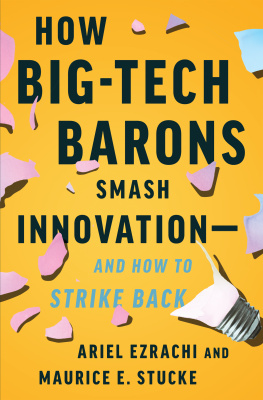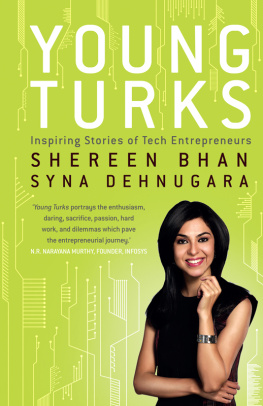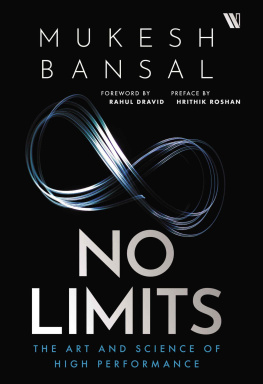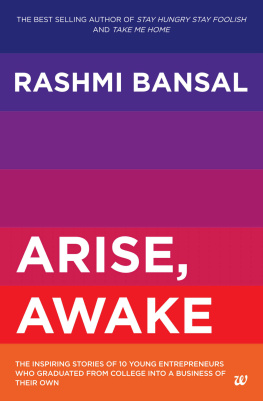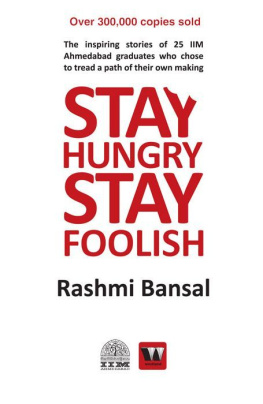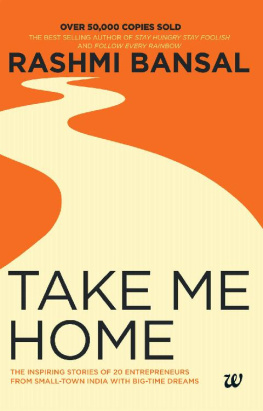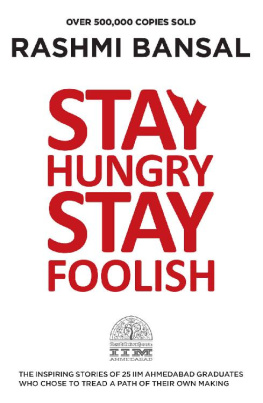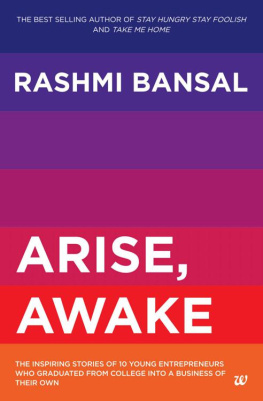Shereen has been the recipient of the Best Business Talk Show award at the News Television Awards for two years consecutively. She also won the FICCI Woman of the Year award for her contribution to the Media in 2005, and was named a Young Global Leader by the World Economic Forum.
Shes been planning a big year of travel for years now and hopes to make 2015 that year with her husband and very own Young Turk in tow.
Company name: Infosoft Global
Founders: Pallav Nadhani and Kisor Nadhani
Date of incorporation: 13 January, 2005
Size: Revenue at INR 48 crore and profit before tax at INR 34 crore for FY13
Head count: 61
Geographical presence: Kolkata and Bangalore
Mission statement: Convert all boring data into a delightful experience, for all
AT 29, PALLAV NADHANI has been running a business for a little over 12 years. He was 17 when he developed his first producta Flash-based chart making software. He sold the first unit online to a user in the US for just USD 15 and received payment by cheque because he hadnt invested in an online payment gateway yet. This first sale resulted in net loss because Pallavs bank in Kolkata levied a USD 35 processing fee to clear an international cheque! The very next day, Pallav borrowed his uncles credit card and registered for an online payment gateway.
That is how Pallav taught himself to do businessby trial and error. Whats worked to his advantage is his speed at rectifying mistakes and the beauty of youthyou have no clear goals, you just want to do better than you did yesterday and, you keep on enjoying it. There are no responsibilities, there are no specific commitments or liabilities, you are doing everything that you want to do and things shape up well.
FusionCharts, the company he founded in 2002 in Kolkata, today has an office in Bangalore and one that will open mid-2015 in the US. The charting software he developed is used across 120 countries by over 23,000 clients, 450500 of whom are Fortune 500 companies, besides the NASA, the US Federal Government, World Bank, and the UID in India. The venture turned in revenues of USD 10 million last fiscal and while that might not seem like a lot, its a fortune for a company thats a market leader in data visualization which is in all a USD 100 million niche in the broader USD 80 billion business intelligence space. Its also a fortune for Pallav who started out all those years ago with the sole aim of earning some pocket money to fit in with the cool set at his college in Kolkata.
Originally from Bhagalpur, Bihar, Pallav started teaching himself computer basics on the desktop his father Kisor Nadhani had installed at their home back in the early 1990s. Kisor ran a computer training academy in Bhagalpur. I was lucky. That was the only luxury item we had in the house, not an AC or a fridge but a computer, and that is what encouraged me to learn more about it. It was probably the only computer in the town, so I became the cool kid of the class and invited friends over to play games which at that time used to load on 5.5 inch floppy disks!
However, running a computer training centre in Bhagalpur was not a very lucrative business and Kisor, serial entrepreneur and, in the words of his son, an adventurer, moved, with his family to Kolkata where he set up a web design business; in many ways this was where Pallavs real education began. He says, My dad used to switch businesses every two or three years just to keep his creative juices flowing. He started with a trading business, then a cycle trading business, then he moved to civil real estate, then he had a computer training business, and then web design. My dad was pretty adventuroushe tried building an accounting package, building solutions around Tally, and would often discuss how he was doing these things, and the challenges he was running into, with me. So from a very early age it was a great learning curve for me. It was almost like he was treating me like an equal and taking my opinion when I didnt really have one but he made me feel like an equal. That helped shape my thought processes in the early span of my life.
Adjusting to life in a big city like Kolkata and a school like Le Martiniere Boys was not easy for Pallav and he increasingly found himself spending all his time post school at his dads office, where he learned various aspects of web design and even accompanied his father to client meetings. Then, in a bid to earn some extra pocket money, 16-year-old Pallav started looking for opportunities online. He chanced upon a website for techies, ASPToday, that paid anywhere from USD 600 to USD 1500 for innovative tech articles. Pallav, who had been mulling the idea of building an interactive charting solution to break away from the monotony of using Excel for school projects, decided to write for the website. The article was actually a paper draft of the product he would eventually build using Flash and ASP. ASPToday accepted the article and sent across USD 1500 to Pallavs bank account. Perhaps Pallav would have forgotten about the whole project and moved on but developers and coders who read ASPToday began getting in touch with Pallav and suggesting changes and improvements to the design and functionalities. So the USD 1500 became the seed capital for the company and Pallav got to work product-izing the article.
Once the product was ready, a rudimentary website was put together and two versions were releaseda users edition priced at USD 15 and a developers edition priced at USD 49 which also included the source code. Pallav began writing articles on various technology forums and magazines and even reached out to the developers on ASPToday to purchase the productthat was all the marketing he knew and all the marketing he did for the product. After the first sale debacle, he made two more sales of the developers edition in the first month itself and the venture, which was then called FXGraphs, turned profitable.
For the first three years, Pallav ran the show solo from his bedroomhe was the developer, the customer support guy, and the sales team all rolled into one. Once I was on a call helping a customer solve a technical problem with our product and once the problem was solved he asked me to transfer the line to the sales team. I didnt have a sales team, so I just changed my accent and said, Heres the sales team speaking; and ended up making a license sale.
For FusionCharts, the first inflection point came in 2005 they already had 2,000 customers and had clocked USD 1.5 million in sales the previous year, but Pallav believed it was time to get serious. I graduated from college in 2005 and I knew that I had had my fun in college. Now I really needed to take FusionCharts to the next level and scale it up with a great release. The version of FusionCharts released that year became a runaway success; we grew 100 percent year on year for the next few years because of that product. We got a lot of fan following and community engagementa lot of other developers started recommending our productand then we got a lot of requests to build newer products around data visualization. A market-driven product development cycle started then and I started hiring a team. The year 2005 was also when I got an office, our first, in a residential building. It was a 20-seater office which we bought for INR 10 lakh and on which we spent another INR 10 lakh to decorate. The funny story is that we got it for just INR 10 lakh because that building was like the Leaning Tower of Pisa; so we got it for cheap.



